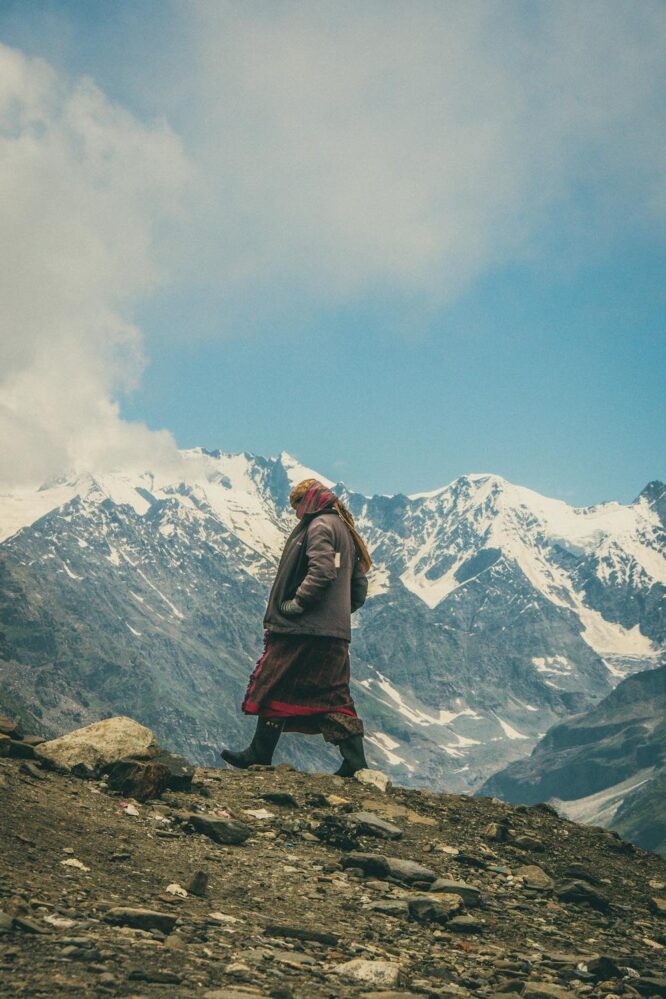
Introduction: Why Trekking in Uttarakhand Is a True Journey
Trekking in Uttarakhand is not just an activity—it’s a real connection to the mighty Himalayas, untouched forests, and cultural roots of India. Nestled in the northern part of the country, Uttarakhand is often referred to as the “Land of the Gods” because of its ancient temples and spiritual heritage. But for trekkers, it offers something else: a rugged yet beautiful terrain filled with snow-capped peaks, alpine meadows, glaciers, and quiet trails that feel like they were built just for walking.
Whether you are a solo traveler, a group adventurer, or someone looking for silence in the mountains, trekking in Uttarakhand opens up a world that’s raw, unpredictable, and deeply rewarding.
Top Treks for Every Trekker’s Bucket List
Uttarakhand offers trekking routes for every type of trekker—beginner to advanced. Here are some of the most remarkable trails that define trekking in Uttarakhand:
1. Valley of Flowers Trek
Located in the Chamoli district, this trek is ideal for nature lovers. From July to September, the entire valley blooms with rare and exotic Himalayan flowers. The trail starts at Govindghat and leads through Ghangaria to the valley.
- Difficulty: Easy to Moderate
- Altitude: 14,100 feet
- Best Time: July to September
- Highlight: UNESCO World Heritage Site
This trail is perfect for beginners and offers more than just scenic beauty—it’s a journey through a living painting.
2. Kedarkantha Trek
The Kedarkantha Trek is among the most sought-after winter treks in India. With pine forests, frozen lakes, and 360-degree views of snow-covered peaks, it’s a favorite for those trekking in Uttarakhand during the colder months.
- Difficulty: Moderate
- Altitude: 12,500 feet
- Best Time: December to April
- Highlight: Ideal winter trek for clear snow scenes
The summit view from Kedarkantha makes it a fulfilling climb for first-timers and experienced trekkers alike.
3. Roopkund Trek
Known for the famous “Skeleton Lake,” Roopkund Trek is a mysterious and challenging journey. The trail passes through oak forests, glacial valleys, and ends at a lake filled with human skeletons dating back centuries.
- Difficulty: Moderate to Difficult
- Altitude: 16,499 feet
- Best Time: May to June, September to October
- Highlight: Historical significance and dramatic glacier views
Roopkund is one of the more intense trails when it comes to trekking in Uttarakhand but remains legendary for those who crave a deeper challenge.
4. Har Ki Dun Trek
This trail is a real glimpse into ancient Himalayan life. Also called the “Valley of Gods,” Har Ki Dun is dotted with old wooden villages, streams, and meadows. It’s a great cultural trek with panoramic mountain views.
- Difficulty: Easy to Moderate
- Altitude: 11,700 feet
- Best Time: April to June, September to November
- Highlight: Villages like Osla that feel frozen in time
Har Ki Dun offers not just physical trekking, but a visual and emotional journey through untouched Himalayan communities.
5. Pindari Glacier Trek
Perfect for beginners, this trek leads to the Pindari Glacier snuggled between Nanda Devi and Nandakot peaks. It’s well-marked and manageable, yet offers every bit of the Himalayan charm.
- Difficulty: Easy to Moderate
- Altitude: 12,300 feet
- Best Time: April to June, September to November
- Highlight: Scenic river trails and glacier views
Pindari Glacier Trek is an underrated gem when it comes to peaceful trekking in Uttarakhand.
Unique Experiences Beyond the Trails
Trekking in Uttarakhand isn’t just about the climb—it’s about what you learn and live along the way.
1. Homestays in Remote Villages
Staying in a Himalayan village opens your eyes to the hospitality and simplicity of mountain life. Local food, conversations around wood-fire kitchens, and early sunrises over peaks make you feel more connected than any hotel ever could.
2. Flora and Fauna Encounters
From rare blue poppies to elusive snow leopards and Himalayan monals, the region is a biodiversity hotspot. Even the silence feels alive in Uttarakhand.
3. Cultural Crossroads
You’ll pass temples, age-old shrines, and even shepherd settlements where life hasn’t changed for hundreds of years. Locals may speak Garhwali or Kumaoni, but their smiles say everything.
How to Prepare for Trekking in Uttarakhand
Preparation plays a big role in how much you enjoy your trek. Here’s what you need to keep in mind:
Physical Fitness
Start training at least a month before your trek. Practice walking long distances with a backpack, and try climbing stairs to build endurance.
Packing Right
Carry essential gear such as a good pair of trekking shoes, weather-resistant clothing, thermal layers, a headlamp, first-aid kit, and water purification tablets. Pack light, but don’t skip the basics.
Altitude Awareness
Altitude sickness is real. Acclimatize well, avoid rushing, and always inform your guide if you feel unwell. Hydration and proper rest are critical.
Local Permits and Guides
Many trekking routes in Uttarakhand require permits. It’s best to book through authorized trek operators who manage logistics and offer experienced guides. Trekking without a guide in some regions is unsafe and not allowed.
Best Season for Trekking in Uttarakhand
While treks are available throughout the year, the best time depends on the trail you pick.
- Spring (March to April): Flower-filled meadows, clear skies, and melting snow.
- Summer (May to June): Pleasant weather and open high-altitude trails.
- Monsoon (July to August): Not ideal due to landslides, but Valley of Flowers is in full bloom.
- Autumn (September to November): Crisp views, fewer crowds, ideal weather.
- Winter (December to February): Great for snow treks like Kedarkantha.
Responsible Trekking Practices
Trekking in Uttarakhand also comes with responsibility. These mountains deserve our respect.
- Carry all waste back down: No plastic or wrappers should be left behind.
- Stick to marked trails: Avoid disturbing natural habitats.
- Respect local culture: Dress modestly and ask before photographing people.
- Limit firewood use: Avoid harming forests—use a camping stove instead.
The real spirit of trekking lies in how lightly you leave your footprint behind.
Conclusion: The Mountains Don’t Just Show Themselves to Anyone
Trekking in Uttarakhand is not about ticking off a tourist list. It’s for those who don’t mind being out of their comfort zones. It’s for people who want to sit on a rock, eat a cold packed lunch, and still feel like it’s the best meal of their lives because of the view.
When the mist lifts from the peaks, and you finally see the mountain standing in full glory—raw, untouched, unapologetic—it humbles you. That’s when you understand that trekking in Uttarakhand isn’t a trip. It’s a shift. And it stays with you long after your shoes are off.







